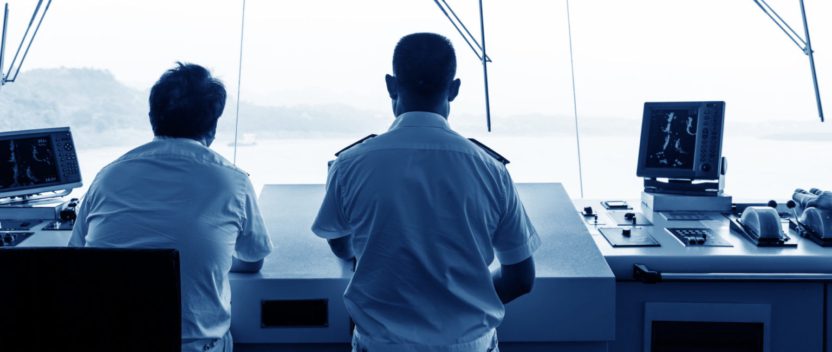High noon for the noon report?
Peter Mantel, Managing Director of BMT SMART happily admits he struggles to explain the shipping industry to his young daughter, but that probably says more about shipping than it does about the English education system.
His interest in improving shipping’s relationship to technology demonstrates that logic doesn’t always apply. Especially in the case of the noon report, the daily communique from ship to shore that still represents all the intelligence that many owners and charterers can hope to receive on their multi-million dollar assets and cargoes during a voyage.
Mantel says BMT SMART’s interest in understanding how to improve the reporting and interpretation of data stemmed in part from consultancy projects which flowed from legal disputes.
“In one case a charterer wanted to gain a clearer picture of whether the owner was in compliance with the charter party based on fuel consumed. In another, a shipowner was in dispute with a yard as to whether his newbuildings were performing to the contract specification. In both cases we used long standing techniques that led to us imagining how this could applied to proactive monitoring of efficiency.”
One of the industry’s flaws in his view is that regulatory bodies don’t push innovation in marine technology and as a result, owners are reluctant to invest in it. That’s perhaps a function of the IMO’s role – as a secretariat which takes its cues from governments and industry – but as an ex-Transas Director, Mantel has bitter experience of “the 15 years it took for the industry to embrace ECDIS” and doesn’t wish to see it repeated.
As a result, he points out that vessel performance monitoring is one small part of a big picture in terms of operational efficiency. “We all very much believe in it but we have got to learn to walk before we can run. We still have trouble convincing owners to fit fuel flow and torsion meters on newbuildings so we have to understand where we are in this process.”
Achieving meaningful vessel performance monitoring relies on three factors he says, the onboard interaction between vessel and crew, understanding the actual environmental conditions in which the vessel is operating and the pressure points on the industry.
Recent falls in the price of oil might bring some temporary relief to owners using heavy fuel oil but even if $50 a barrel oil persists for a year or more, the chances are that freight rates will also remain depressed. Even so, it makes improving efficiency a harder sell to owners and puts the innovators at risk.
“The pressure points are charter rates and fuel prices but from a manufacturer’s point of view there is a need to invest a lot of money and if the industry doesn’t embrace the concept it’s very difficult to continue. It’s crucial that we start developing technologies in partnership,” he says.
The perceived wisdom is that the incumbent ‘technology’ of the noon report works in that it contains a set and reliable amount of data on the ship’s progress and condition. Mantel disagrees.
“It takes nine months of noon reporting to get same certainty in the data as three months continuous monitoring,” he says. “We need to seriously consider how we continue. Is noon reporting good enough? About 70% of the industry still relies on it as their data source. OK, some data is better than no data but we have to understand what we’re working with.”
But he also thinks it would be a mistake to suggest that the industry jumps from a virtually manual process to one of continuous digital reporting; “that would be trying too much. We need a hybrid, semi-automated system so that we can factor in errors and human interaction”.
The issue is not just the quantity of data – continuous reporting provides all the data points needed – but its quality too. Then the consultant must be able to translate it into something meaningful.
The measure/manage/analyse/action mantra is uppermost but measuring uniformly appears to be the biggest headache. Mantel says too few people consider the accuracy of the sensors from which they will collect data – even owners admit that they are often inaccurate, which tends to make them less keen to spend money on consultants to interpret that data.
Sensors that record speed though water are hard to fix between dry docks but without an accurate baseline, the task is very hard to start. BMT SMART has developed algorithms that help, calculating speed over ground factoring in tidal and current data to arrive at reliable speed, but it seems the main task is convincing the engine room it may have a problem.
“A lot of what comes from above decks can be automated and providing that navigation, bridge and radar systems are set up correctly, that data can be more easily collected for analysis. In the engine room it’s different because some of the instruments will have an analogue signal output so it’s more complicated,” he adds.
Being able to make the collection and input task as simple as possible for the crew is clearly vital but owners need to have the systems in place to support them, he says.
The BMT SMART approach is to filter and model the data received and build a series of five key vessel coefficients – specific fuel oil consumption, fuel consumption versus speed, propeller, hull and speed versus power, with automatic generation of KPIs. The received data is modelled with highly accurate Metocean data taking into account the environmental factors when the data was collected.
Filtering requires a large dataset to ensure that there is sufficient information to produce reliable analysis. The results are combined with BMT’s derived performance indicators based on its own automated performance monitoring software.
“The principle is pretty simple when you start isolating the elements, so for the hull you can look at the impact of anti-fouling coatings or energy saving devices in detail. These are technologies that have been around for some years, what we have done is found a way to make them usable by people who don’t have a PHD in Naval Architecture so they can get more out of the data.”
The results can be used not just for ongoing performance review but also for predictive maintenance and to compare the performance across a fleet. Mantel seems reluctant to call the death of the noon report but he also says the alternative is getting to a stage where it could be considered a supplement and in time, a replacement.
“Very often we can produce a lot of data and people don’t understand what to do with it. What we need is to make it easy to understand and distribute it to the various stakeholders. To do that the industry needs to embrace the technology, to invest and start putting better systems onboard. The need is not going to go away and something has to give.”
Ends


